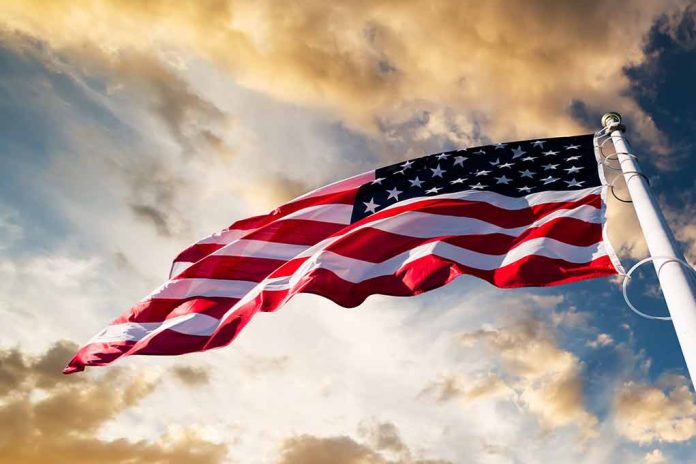
Ah, the American flag. Old Glory. The Stars and Stripes. It’s more than just a piece of fabric—it’s a symbol of freedom, unity, and sacrifice. You’d think displaying it would be as straightforward as apple pie, right? Well, leave it to bureaucratic red tape to complicate matters. Yes, the pastime of flying our beloved flag has a whole codebook, the U.S. Flag Code, which certain folks take quite seriously.
Now, let’s dive into a curious case involving Camping World, a massive American flag, and a whole lot of hullabaloo. This story isn’t just about a flag; it’s about patriotism, legality, and the fine line between tradition and free speech.
Why Was Camping World Told They Could Not Raise an American Flag?
Camping World, a recreational vehicle company, found itself at the center of a controversy when it decided to raise an enormous American flag at one of its locations. The problem? The flag was unauthorized. Local authorities demanded its removal, citing violations of municipal codes which limit the size of flags to maintain aesthetic uniformity and safety standards.
The company, however, argued that they were simply exercising their patriotic duty and right to honor U.S. service members. As Veterans Day honors America’s service members, past and present, who served in war and peace, Camping World seemed to believe its actions were both righteous and necessary.
Legal Implications of Raising Unauthorized Flags
So, why is there such a hullabaloo about a flag? The U.S. Flag Code, established in 1923, restricts the flag’s use for commercial purposes to preserve its sacred reputation. Despite these guidelines, the Supreme Court ruled in 1989 that flag-protection laws violated free speech, making adherence to the Flag Code purely voluntary and traditional.
This brings us to the interesting legal conundrum: While the Flag Code offers comprehensive guidelines, including where and how to properly display the American flag, its provisions lack enforceable penalties.
Public Response
The public reaction to the ordeal has been mixed, with some ardent patriots praising Camping World’s defiance as a stand for American values. Others, however, are concerned about the safety and regulatory implications.
Guidelines for Flag Display
The U.S. Flag Code stipulates where and how the American flag should be displayed, including at public institutions and polling places, hoisted briskly with the union at the peak, and illuminated at night. It also outlines specific holidays and occasions for display, ensuring the flag is accorded the highest respect.
Violations of the Flag Code include using the flag on apparel, for advertising, carrying it flat, letting it touch the ground, or placing items on it. Despite this comprehensive list, violating the Flag Code is not illegal as there are no penalties.
“The Supreme Court ruled in 1989 that flag-protection laws violated free speech, making adherence to the Flag Code voluntary and traditional.”
Title 4 and Title 18 of the U.S. Code
Title 4, Chapter 1, and Title 18, Chapter 33 of the U.S. Code provide guidelines related to the use and desecration of the flag. Desecration is punishable by fine or imprisonment. Disposal of a worn flag, however, is exempt from penalties. Title 36, Chapter 3 of the U.S. Code covers patriotic customs and observances.
Just for those keeping track, the flag has 13 horizontal stripes and a union of stars, with a new star added upon a state’s admission to the union on July 4th. Proper protocols also guide posture and behavior during the Pledge of Allegiance.
As patriotic Americans aged 40 and above who value the principles our flag stands for, the story of Camping World’s defiance reveals a deeper debate. It’s a microcosm of the broader struggle between upholding tradition and exercising freedom, a testament to the complex relationship we have with our national symbols.
So next time you see Old Glory waving high, remember it’s not just fabric but a tapestry of legal and cultural threads that bind us together. For those interested in digging deeper, the full U.S. Flag Code is available online for reference.
And as always, stay vigilant, stay informed, and wave that flag proudly—but maybe just check your local ordinances first.
Sources
- https://www.nbcconnecticut.com/news/national-international/what-is-the-us-flag-code-and-how-does-it-work/2649925/
- https://www.ushistory.org/betsy/flagcode.htm







